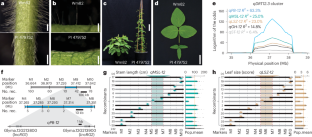2024-04-29 バッファロー大学(UB)
<関連情報>
- https://www.buffalo.edu/news/releases/2024/04/Uniquely-human-gene-enhances-immune-function.html
- https://www.sciencedirect.com/science/article/pii/S2352396424001282
CHRFAM7AはCa2+シグナルとアクチン細胞骨格の再編成を通じてヒトの免疫適応を多様化させる CHRFAM7A diversifies human immune adaption through Ca2+ signalling and actin cytoskeleton reorganization
Kinga Szigeti, Ivanna Ihnatovych, Emily Notari, Ryu P. Dorn, Ivan Maly, Muye He, Barbara Birkaya, Shreyas Prasad, Robin Schwartz Byrne, Dinesh C. Indurthi, Erik Nimmer, Yuna Heo, Kolos Retfalvi, Lee Chaves, Norbert Sule, Wilma A. Hofmann, Anthony Auerbach, Gregory Wilding, Yongho Bae, Jessica Reynolds
eBioMedicine Available online:2 April 2024
DOI:https://doi.org/10.1016/j.ebiom.2024.105093

Summary
Background
Human restricted genes contribute to human specific traits in the immune system. CHRFAM7A, a uniquely human fusion gene, is a negative regulator of the α7 nicotinic acetylcholine receptor (α7 nAChR), the highest Ca2+ conductor of the ACh receptors implicated in innate immunity. Understanding the mechanism of how CHRFAM7A affects the immune system remains unexplored.
Methods
Two model systems are used, human induced pluripotent stem cells (iPSC) and human primary monocytes, to characterize α7 nAChR function, Ca2+ dynamics and decoders to elucidate the pathway from receptor to phenotype.
Findings
CHRFAM7A/α7 nAChR is identified as a hypomorphic receptor with mitigated Ca2+ influx and prolonged channel closed state. This shifts the Ca2+ reservoir from the extracellular space to the endoplasmic reticulum (ER) leading to Ca2+ dynamic changes. Ca2+ decoder small GTPase Rac1 is then activated, reorganizing the actin cytoskeleton. Observed actin mediated phenotypes include cellular adhesion, motility, phagocytosis and tissue mechanosensation.
Interpretation
CHRFAM7A introduces an additional, human specific, layer to Ca2+ regulation leading to an innate immune gain of function. Through the actin cytoskeleton it drives adaptation to the mechanical properties of the tissue environment leading to an ability to invade previously immune restricted niches. Human genetic diversity predicts profound translational significance as its understanding builds the foundation for successful treatments for infectious diseases, sepsis, and cancer metastasis.
Funding
This work is supported in part by the Community Foundation for Greater Buffalo (Kinga Szigeti) and in part by NIH grant R01HL163168 (Yongho Bae).


